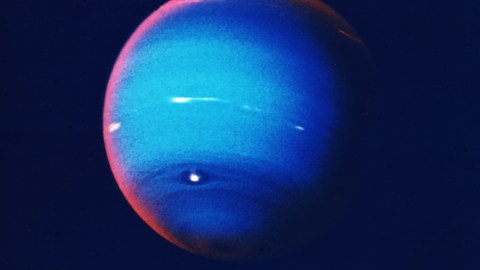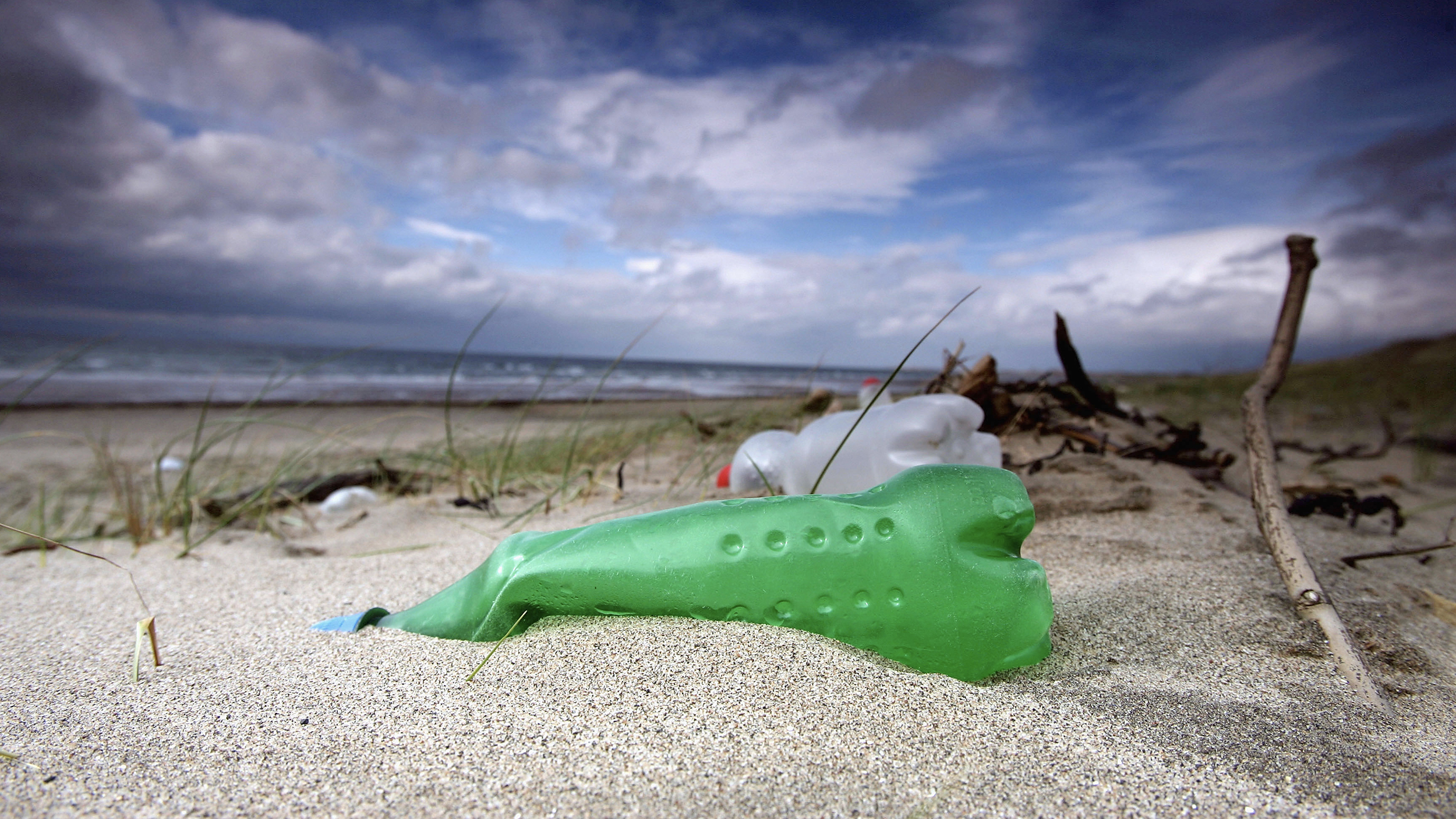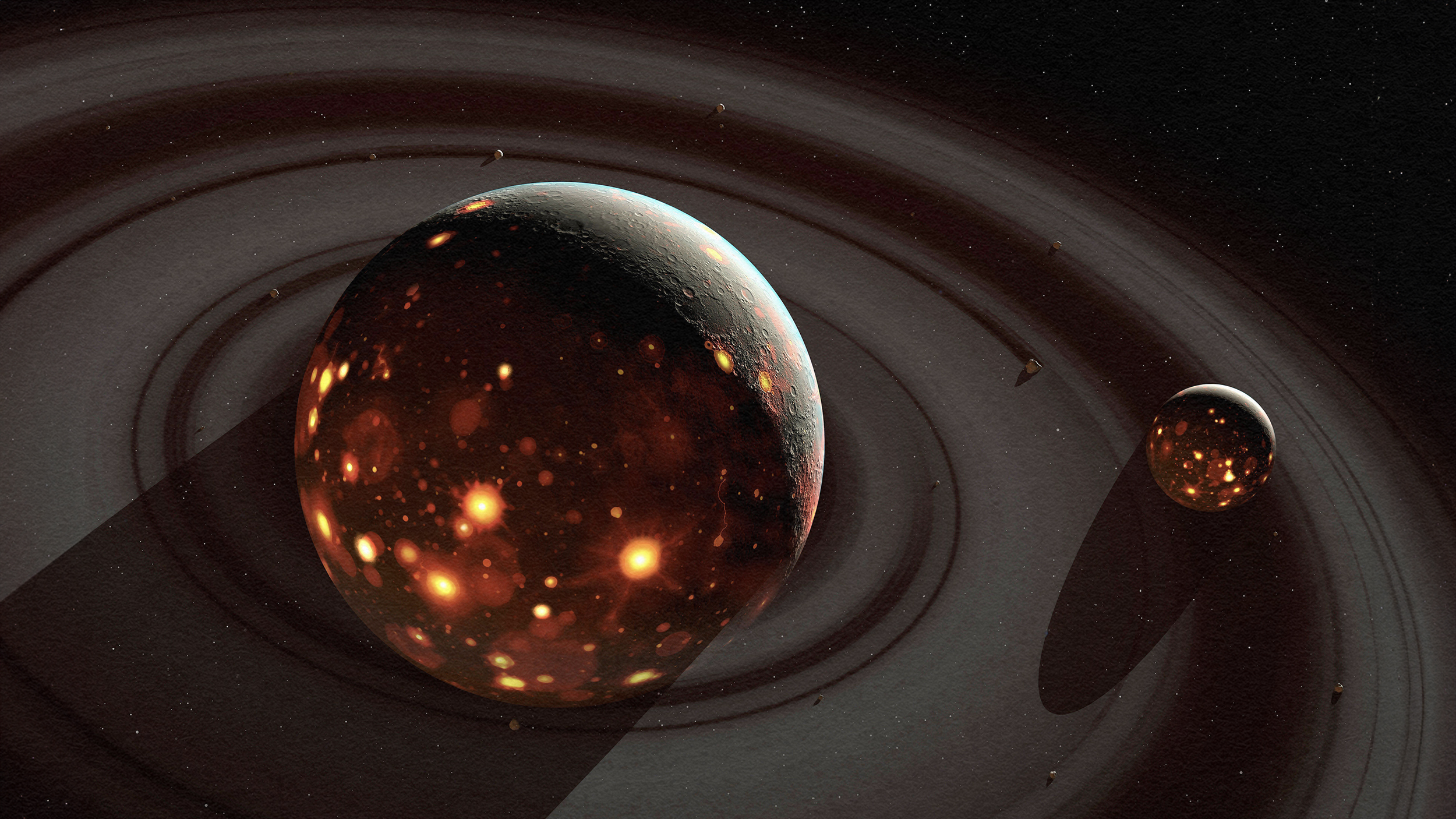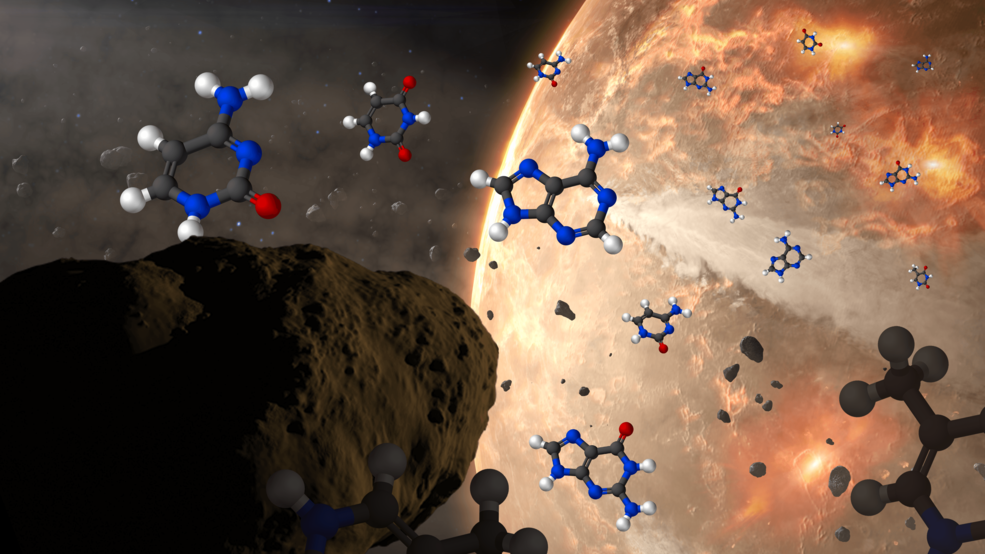Study: Life might survive, and thrive, in a hydrogen world

Hulton Archive/Getty Images
As new and more powerful telescopes blink on in the next few years, astronomers will be able to aim the megascopes at nearby exoplanets, peering into their atmospheres to decipher their composition and to seek signs of extraterrestrial life.
But imagine if, in our search, we did encounter alien organisms but failed to recognize them as actual life.
That’s a prospect that astronomers like Sara Seager hope to avoid. Seager, the Class of 1941 Professor of Planetary Science, Physics, and Aeronautics and Astronautics at MIT, is looking beyond a “terra-centric” view of life and casting a wider net for what kinds of environments beyond our own might actually be habitable.
In a paper published today in the journal Nature Astronomy, she and her colleagues have observed in laboratory studies that microbes can survive and thrive in atmospheres that are dominated by hydrogen — an environment that is vastly different from Earth’s nitrogen- and oxygen-rich atmosphere.
Hydrogen is a much lighter gas than either nitrogen or oxygen, and an atmosphere rich with hydrogen would extend much farther out from a rocky planet. It could therefore be more easily spotted and studied by powerful telescopes, compared to planets with more compact, Earth-like atmospheres.
Seager’s results show that simple forms of life might inhabit planets with hydrogen-rich atmospheres, suggesting that once next-generation telescopes such as NASA’s James Webb Space Telescope begin operation, astronomers might want to search first for hydrogen-dominated exoplanets for signs of life.
“There’s a diversity of habitable worlds out there, and we have confirmed that Earth-based life can survive in hydrogen-rich atmospheres,” Seager says. “We should definitely add those kinds of planets to the menu of options when thinking of life on other worlds, and actually trying to find it.”
Seager’s MIT co-authors on the paper are Jingcheng Huang, Janusz Petkowski, and Mihkel Pajusalu.
Evolving atmosphere
In the early Earth, billions of years ago, the atmosphere looked quite different from the air we breathe today. The infant planet had yet to host oxygen, and was composed of a soup of gases, including carbon dioxide, methane, and a very small fraction of hydrogen. Hydrogen gas lingered in the atmosphere for possibly billions of years, until what’s known as the Great Oxidation Event, and the gradual accumulation of oxygen.
The small amount of hydrogen that remains today is consumed by certain ancient lines of microorganisms, including methanogens — organisms that live in extreme climates such as deep below ice, or within desert soil, and gobble up hydrogen, along with carbon dioxide, to produce methane.
Scientists routinely study the activity of methanogens grown in lab conditions with 80 percent hydrogen. But there are very few studies that explore other microbes’ tolerance to hydrogen-rich environments.
“We wanted to demonstrate that life survives and can grow in an hydrogen atmosphere,” Seager says.
A hydrogen headspace
The team took to the lab to study the viability of two types of microbes in an environment of 100 percent hydrogen. The organisms they chose were the bacteria Escherichia coli, a simple prokaryote, and yeast, a more complex eukaryote, that had not been studied in hydrogen-dominated environments.
Both microbes are standard model organisms that scientists have long studied and characterized, which helped the researchers design their experiment and understand their results. What’s more, E.coli and yeast can survive with and without oxygen — a benefit for the researchers, as they could prepare their experiments with either organism in open air before transferring them to a hydrogen-rich environment.
In their experiments, they separately grew cultures of yeast and E. coli, then injected the cultures with the microbes into separate bottles, filled with a “broth,” or nutrient-rich culture that the microbes could feed off. They then flushed out the oxygen-rich air in the bottles and filled the remaining “headspace” with a certain gas of interest, such as a gas of 100 percent hydrogen. They then placed the bottles in an incubator, where they were gently and continuously shaken to promote mixing between the microbes and nutrients.
Every hour, a team member collected samples from each bottle and counted the live microbes. They continued to sample for up to 80 hours. Their results represented a classic growth curve: At the beginning of the trial, the microbes grew quickly in number, feeding off the nutrients and populating the culture. Eventually, the number of microbes leveled off. The population, still thriving, was stable, as new microbes continued to grow, replacing those that died off.
Seager acknowledges that biologists do not find the results surprising. After all, hydrogen is an inert gas, and as such is not inherently toxic to organisms.
“It’s not like we filled the headspace with a poison,” Seager says. “But seeing is believing, right? If no one’s ever studied them, especially eukaryotes, in a hydrogen-dominated environment, you would want to do the experiment to believe it.”
She also makes clear that the experiment was not designed to show whether microbes can depend on hydrogen as an energy source. Rather, the point was more to demonstrate that a 100 percent hydrogen atmosphere would not harm or kill certain forms of life.
“I don’t think it occurred to astronomers that there could be life in a hydrogen environment,” says Seager, who hopes the study will encourage cross-talk between astronomers and biologists, particularly as the search for habitable planets, and extraterrestrial life, ramps up.
A hydrogen world
Astronomers are not quite able to study the atmospheres of small, rocky exoplanets with the tools available today. The few, nearby rocky planets they have examined either lack an atmosphere or may simply be too small to detect with currently available telescopes. And while scientists have hypothesized that planets should harbor hydrogen-rich atmospheres, no working telescope has the resolution to spot them.
But if next-generation observatories do pick out such hydrogen-dominated terrestrial worlds, Seager’s results show that there is a chance that life could thrive within.
As for what a rocky, hydrogen-rich planet would look like, she conjures up a comparison with Earth’s highest peak, Mt. Everest. Hikers attempting to hike to the summit run out of air, due to the fact that the density of all atmospheres drop off exponentially with height, and based on the dropping off distance for our nitrogen- and oxygen-dominated atmosphere. If a hiker were climbing Everest in an atmosphere dominated by hydrogen — a gas 14 times lighter than nitrogen — she would be able to climb 14 times higher before running out of air.
“It’s kind of hard to get your head around, but that light gas just makes the atmosphere more expansive,” Seager explains. “And for telescopes, the bigger the atmosphere is compared to the backdrop of a planet’s star, the easier it is to detect.”
If scientists ever get the chance to sample such a hydrogen-rich planet, Seager imagines they might discover a surface that is different, but not unrecognizable from our own.
“We’re imagining if you drill down into the surface, it probably would have hydrogen-rich minerals rather than what we call oxidized ones, and also oceans, as we think all life needs liquid of some kind, and you could probably still see a blue sky,” Seager says. “We haven’t thought about the entire ecosystem. But it doesn’t necessarily have to be a different world.”
Seed funding was provided the Templeton Foundation, and the research was, in part, funded by the MIT Professor Amar G. Bose Research Grant Program.
Reprinted with permission of MIT News. Read the original article.





